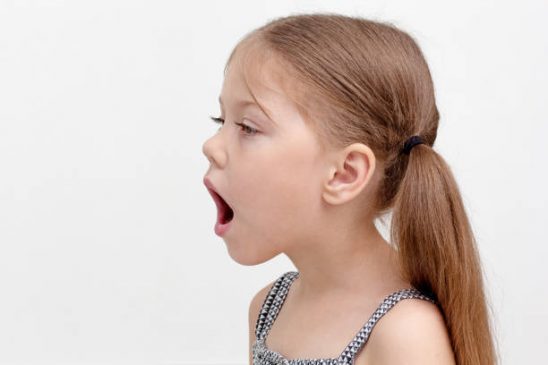Dysarthria, Not Aphasia
Dysarthria is a medical term for a speech disorder that is often caused by damage to the tongue and muscles involved in speech or nerves that control them. It is common in many nervous system conditions, such as multiple sclerosis, Parkinson’s disease or cerebral palsy. Dysarthria may result from a stroke or brain incident causing damage, and structural defects of the mouth, such as cleft lips and palates, may also affect speech.
Drug or surgical Treatment of the underlying disease or structural defect may restore the ability to speak clearly. In other instances, dysarthria patients may benefit significantly from speech therapy.

Dysarthria affects muscles in the mouth, face, and respiratory system. The condition normally results from a neurological injury, stroke or another brain injury. Dysarthria is also known as dysarthosis. It is a different medical condition, although sometimes confused with another speech-related disorder known as aphasia.
Symptoms
- Abnormal speech rhythm, tones
- Audible breathiness
- Chewing problems
- Difficulty with pronunciation
- Swallowing problems
- Drooling
- Hoarseness
- Limitation in the movement of jaw, lip and tongue
- Poor ability to articulate
- Mumbling and fast speech
- Slow speech, Soft Speech, Slurred Speech
- Changes in Speech quality
- Alcohol intoxication
- Amyotrophic sclerosis, lateral, known as ALS a/k/a Lou Gehrig’s Disease
- Botulism
- Dementia
- Cerebral Palsy
- Ill-fitting dentures
- Trauma to Face
- Cancer Surgery
- Head trauma
- Huntington’s Disease
- MS Multiple Sclerosis
- Myasthenia gravis
- Neck cancer
- Neurological disorders in the Brain
- Neuromuscular Disease
- Parkinson’s Disease
- Medication side effect
- Ataxia type 2 spinocerebellar
- StrokeTIA, transient ischemic attack
Classification
Depending upon how symptoms are present, dysarthrias may be classified in various classifications by science:
- Ataxic, meaning uncoordinated and uneven
- Flaccid, limp, unfirm, benign
- Hyperkinetic, being of high and uncontrolled physical movement.
- Hypokinetic, being absent the regular use of muscles and tendons.
- Spastic, causing uncontrolled volatile movement of arms, legs, spine or head
- Unilateral motor neuron, upper, consisting of mild intermittent uncoordinated speech
- Mixed Dysarthria is a combination of two or more of the Classification types.
Diagnosis
Diagnosis of Dysarthria is made by a medical professional who will define Dysarthria in that patient. Who may request medical history involving speech impairment? Certain diagnostic tests may also be used in physical examination, including:
- Blood tests
- Cerebral angiogram
- CT scan of the head
- Electroencephalogram
- Electromyography
- Lumbar puncture
- MR angiography
- MRI of head
- Urinalysis
- X-ray of skull
Treatment
Patients and family members should be amenable to easily explaining the ailment to persons who ask, “What is Dysarthria?” A simple explanation puts both the patient and the newcomer at ease. Treatment for Dysarthria may vary from case to case, just as the Dysarthria definition may mean something unique to your circumstances.
Drug therapy, surgical intervention and speech therapy all have a function in helping the affected patient. The individual may see a treating speech or language therapist. A communication aid can sometimes be useful and used in some cases. This would be the preferred Treatment method where treating the primary cause of Dysarthria is possible.
Prognosis for Recovery
Dysarthria is often the resulting disability after a stroke affecting the speech sounds, pronunciation, the personal quality and loudness of voice, and the ability to speak at a normal rate and understandable tone. The speech problems will differ from person to person, depending on the location within the Brain plus the severity of the stroke.
People with Dysarthria often benefit from speech therapy. Because they can have markedly different problems, giving everyone general suggestions for speech improvement is impossible. It’s best to work with a speech-language pathologist certified by the American Speech-Language-Hearing Association so that the patient can have an individualized Treatment program.
However, persons with Dysarthria can use really simple exercises to improve the social likelihood that their speech is understandable.
- Avoid talking in noisy places, so Who can better hear your speech?
- Reduce or eliminate noise. Turn the volume on the television or radio down or off.
- Choose quiet restaurants.
- Communicating face to face is much easier than talking from another room or on the telephone.
- Enable your conversational partner to focus on your face. We all get a lot of cues about what a person is saying from lip-reading!
- Always have a pencil, small notepad, or index card with the alphabet printed. If your listener can’t understand you, try writing or pointing to the first letter of each word as you say it, which is not as tough as writing each word or pointing to each letter in every word you speak.
Consider using the Telecommunications Relay Service (TRS) to communicate by phone. Ask people to be patient with you! Once most individuals understand you have a medical disability, they are more than obliging and include you in their conversations about speech disorders in children, such as Dysarthria.
Ataxic Dysarthria is just another definition of a pattern of impaired speech. It is a motor disorder, meaning the child has problems using the oral motor muscles to speak. Specifically, the mouth and face muscles can weaken or not have controlled movement. The respiratory system can be affected. The exact symptoms, ramifications and severity will vary depending on the primary cause of damage to the nervous system.
Causes of Dysarthria in Children
Like many other speech disorders in children, Dysarthria can be caused by many different things. Brain injury due to trauma is one possible cause, as are tumors, palsy and muscular dystrophy. Other causes of Dysarthria can include rare diseases such as Lyme disease and the crippling Huntington’s disease.
What Dysarthria Means for Your Child
If your child is diagnosed with Dysarthria, he will struggle to control his speech. You may notice the child has slurred speech, slowed speech, or labored speech due to breath control problems. Children with Dysarthria may struggle to control the pitch of their voices and may speak in a monotone or an excessively high or low pitch. Voice quality is impaired, and the children may unavoidably make hoarse or whiny nasal sounds.
You may notice your child has trouble articulating clearly, particularly concerning words with multiple syllables. In addition to speech and language issues, children with Dysarthria often have problems with saliva control, chewing, and swallowing motor control. It seems to parents that the entire mouth and all it involves has sustained damage in their young child.
Speech Therapy for Dysarthria
Speech disorders in children require a customized Treatment plan that focuses on that child’s unique needs. Your child’s speech-language pathologist will assess the symptoms and develop a Treatment plan built for your child. The goals of your child’s speech therapy for Dysarthria might include:
- strengthening oral motor muscles,
- improving muscle movement,
- improving breath support, and
- speech rate correction
A therapist will also help your child practice correct articulation if that is one of his problems. Vocalizing consonants has proven to be especially beneficial for children with Dysarthria.
Speech Therapy at Home
Work with your child’s speech therapist to learn practical activities you can assist the child with at home. For example, if your child struggles to articulate certain sounds, the Speech Buddies online program might help him maintain a controlled environment that encourages clear communication.
Keep all noise and distractions to a minimum. Give your child time to speak and watch him as he does. Tell him which parts of his speech you could understand and could not. Your child might also benefit from learning to use simple hand gestures, sign language, picture cards, or special electronic readers to reduce frustration over his communication skills.
Art Therapy Can Be Excellent Speech Therapy!
Sometimes younger children’s parents understand that speech therapy doesn’t need to look like a traditional speech therapy classroom. Instead, speech therapy can take on a more creative approach using Art. Art can be a useful tool to enhance a child’s speech and language development.
Whether or not you have a child who needs help with verbal expression or auditory comprehension, several art-based activities will engage every one of your child’s senses. Best of all, Who can do art therapy at home? For some adults, the phrase “art project” evokes scenes of mess and chaos! However, for a child in speech therapy, an art experience may be exactly the ticket for him to explore his creativity and improve verbal and comprehension skills, all at the same time.
Cerebral Palsy Benefit Examples
Studies show art therapy helps make significant improvements in cerebral palsy patients in particular. It can improve CP children’s ability to participate in behavior with a purpose. Art therapy can help build and reinforce speech therapy goals and objectives. Art therapy and speech therapy both share components for language and expression.
Art therapy is a form of communication development that allows even child participants to express themselves through visual media. Individual participants are asked to discuss their artwork and share the project they are working on with others. This allows a child to gain self-confidence and public speaking experience. He will also develop innate pride in his work.
Therapy Ideas
What are some art therapy and speech therapy projects to explore? Art comes in all forms, and different children may prefer other materials. Offer paints, brushes, charcoal pencils, clay, construction paper sheets, coloured chalk, sand and self-stick decals. Consider items such as puppets, dress-up costumes, masks, or music for dance—all these makeup perfect venues for art to be used as speech therapy.
The more engaged a child becomes with art projects, the more self-confidence is gained, which translates into easier and very enjoyable opportunities to work on the child’s speech therapy.
Summary of Dyasrthria Disability
The modern electronic age has made apps available for I-phone use that can enable a person with speech disorders to avail himself of online sites for information, therapies and coping strategies. Children, in particular, can benefit from the online speech disorder exercises and programs.
Computers, cell phones and many electronic aids today can assist in rehabilitative therapies and cognitive enhancement for all ages affected by dysarthria disability. With the advancements in scientific diagnostic procedures and Treatment breakthroughs, the future is brighter today for sufferers of speech disorders and, therefore, a light at the end of the tunnel for parents of Dysarthria affected children.














